2016 Activity Report for Mission 1: Environmental Diagnosis and Regulation of Circulatory Function
Updated: 2017/08/31
Research1:Biosphere−Atmosphere Exchange of Trace Molecules (Kenshi Takahashi)
We study carbon dynamics from the ecosystem scale to the plot scale in forest environments through in-situ measurements of trace gas fluxes based on micrometeorological methods and automated closed-chamber techniques.
Publications, etc.
Sakabe, A., Y. Kosugi, C. Okumi, M. Itoh, and K. Takahashi, Riparian wetlands affect the seasonal variations of watershed-scale methane budget in a temperate monsoonal forest, J. Geophys. Res. 121, 1717-1732 (2016). doi:10.1002/2015JG003292.
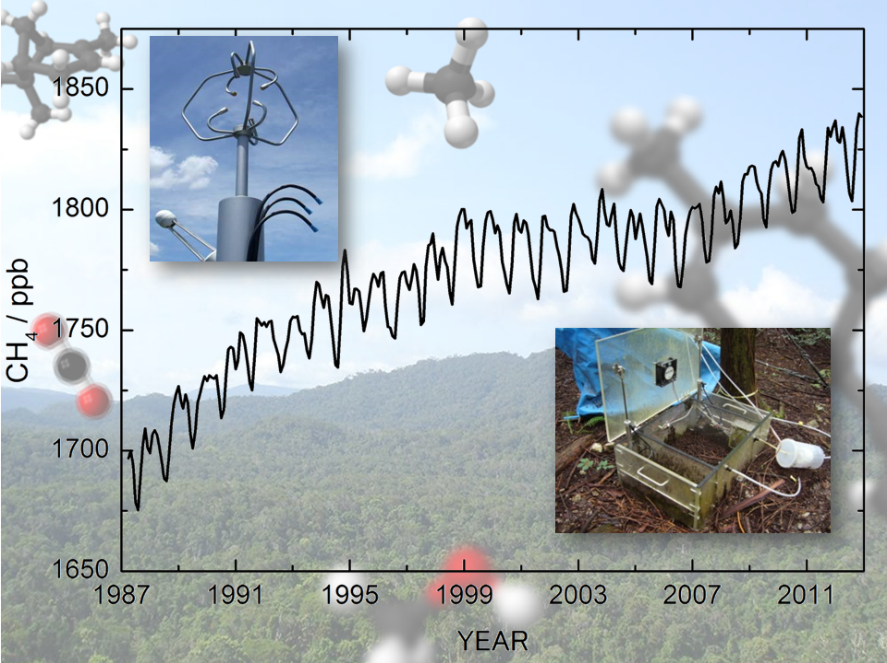
Research 2 :Interaction between legume plants and rhizosphere microbes (Akifumi Sugiyama)
The aim of this research is to characterize plant−microbe interaction on a molecular level. We study transporter genes involved in legume−rhizobium symbiosis and the function and dynamics of plant metabolites involved in rhizosphere interactions.
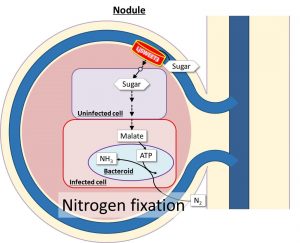
Figure. LjSWEET3, a sugar transporter in the nodule of Lotus japonicas.
Publications, etc.
Sugiyama, A., Saida, T., Yoshimizu, M., Takanashi, K.,Sosso, D., Frommer, W.B., Yazaki, K. Molecular characterization of LjSWEET3, a sugar transporter in nodule of Lotus japonicus. Plant and Cell Physiology (in press)
Research 3: Simultaneous observations of atmospheric turbulence with MU (Middle and Upper atmosphere) radar, small unmanned aerial vehicles (UAV) (Hiroyuki Hashiguchi, Masanori Yabuki, and Toshitaka Tsuda)
Turbulence mixing is an important process that contributes to the vertical transport of heat and substances, but it is difficult to observe because its scale is very small. In a research collaboration between Japan, the United States, and France, the ShUREX (Shigaraki, UAV-Radar Experiment) campaign has been carried out using simultaneously small UAVs developed by the University of Colorado and MU radar.
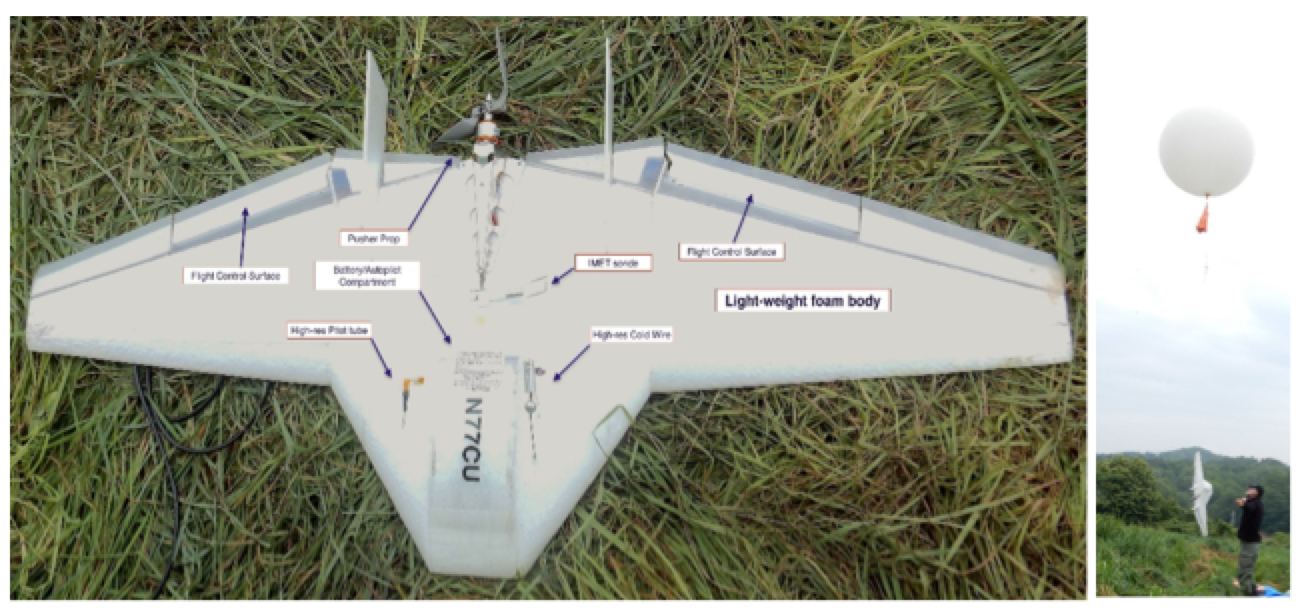
UAV developed by the University of Colorado
Publications, etc.
H. Luce, L. Kantha, H. Hashiguchi, D. Lawrence, M. Yabuki, T. Tsuda, and T. Mixa, Comparisons between high-resolution profiles of squared refractive index gradient M2 measured by the Middle and Upper Atmosphere Radar and unmanned aerial vehicles (UAVs) during the Shigaraki UAV-Radar Experiment 2015 campaign, Ann. Geophys., 35, 423-441, doi:10.5194/angeo-35-423-2017, 2017.
L. Kantha, D. Lawrence, H. Luce, H. Hashiguchi, T. Tsuda, R. Wilson, T. Mixa, and M. Yabuki, Shigaraki UAV-Radar Experiment (ShUREX2015): An Overview with Preliminary Results, Progress in Earth and Planetary Science, doi:10.1186/s40645-017-0133-x, 2017.
Research 4: The control of annual rhythm of wood formation under artificial conditions (Kei’ichi Baba)
Wood formation has an annual rhythm, which restricts the pace of research in this field. We observed wood tissue that formed under artificial atmospheric conditions to shorten the annual rhythm. We cut off a branch from a tree in slumber and examined it after it had been stored in a cool place.
Research Activities
- Microscopic observation of the tissue formed during three cycles growth.
- After the growth, cut the wood stem during slumber and store it in a cool place.
Publications, etc.
The 67th Annual Meeting of the Japan Wood Research Society, Fukuoka, Japan (Mar, 17-19, 2017, planned).
Research 5: Collaborative studies in Fukushima since the Great East Japan Earthquake (Yoshikatsu Ueda and Akifumi Sugiyama)
The authors survey and discuss long-term scientific missions in areas such as agriculture and decontamination in the aftermath of Fukushima’s environmental pollution. The authors also survey and discuss new themes of research efforts in the affected area, including the development of energy crops and green infrastructure.
Symposium
6th International Symposium of Collaborative Researches in Fukushima Since the Great East Japan Earthquake (327th RISH Symposium).
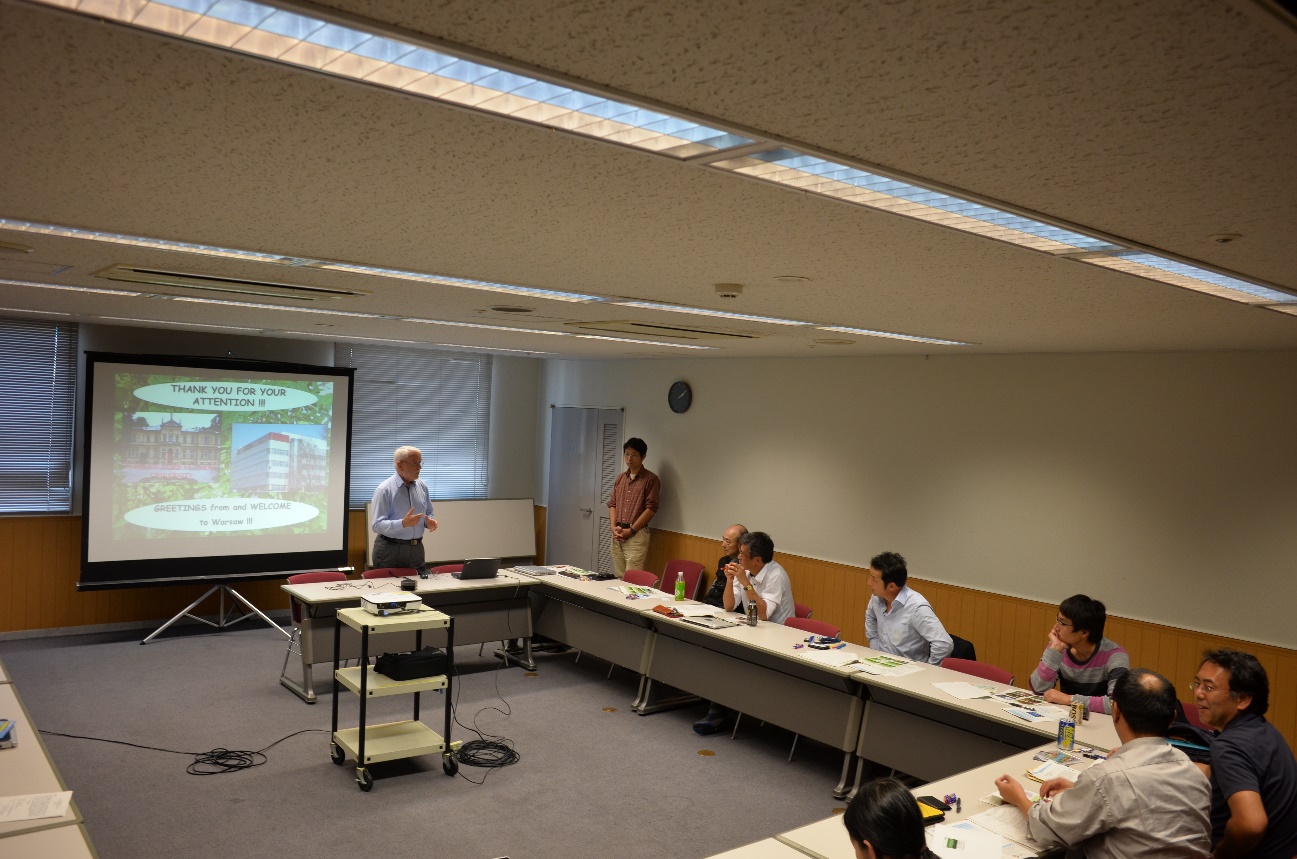
Research 6: The fundamentals of the heartwood formation mechanism (Shiro Suzuki)
It is necessary to improve the quality of timber, such as anti-rotting and drying properties, in order to increase the carbon storage ability of timber as much as possible. The substances that accumulate in heartwood greatly affect wood properties. However, much remains to be elucidated about the biosynthetic mechanisms of heartwood substances. In this study, we aim to elucidate the biosynthetic mechanisms of two major heartwood substances, lignans and norlignans, in order to establish the regulatory fundamentals of heartwood formation.
Research Activities
We are currently elucidating the tertiary structure of (Z)-hinokiresinol synthase, a key enzyme in norlignan biosynthesis, as well as the functions of uncharacterized enzymes involved in norlignan and lignan biosynthesis.
Publications, etc.
Azuma A., Naoki S., Shiro S., Yamamura M., Mikami B., Toshiaki U., Analysis of crystal structure of β subunit of (Z)-hinokiresinol synthase. The 67th Annual Meeting of the Japan Wood Science Society, Fukuoka, Japan (scheduled).
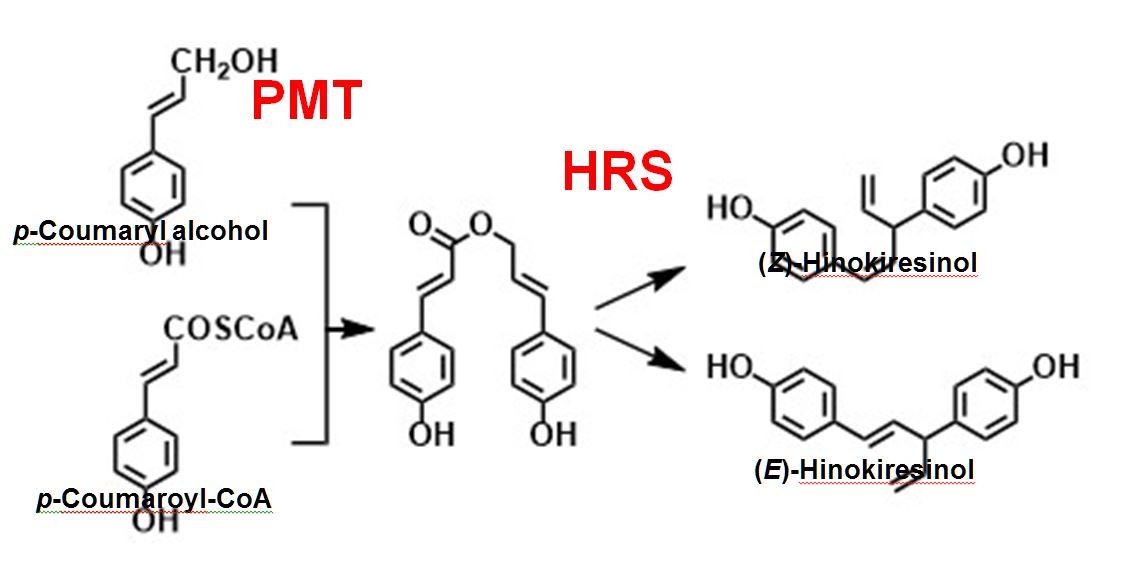
Figure. Biosynthetic pathway of hinokiresinols. (PMT, p-coumaroyl-CoA:monolignol transferase; HRS, (Z)-hinokiresinol synthase.
Research 7: Development of MU radar real-time processing system with adaptive clutter rejection (Hiroyuki Hashiguchi and Mamoru Yamamoto)
Strong clutter echoes from a hard target such as a mountain, building, or aircraft sometimes cause observation problems with atmospheric radars. We develop a real-time processing system to adaptively suppress clutter echoes using MU (Middle and Upper atmosphere) radar.
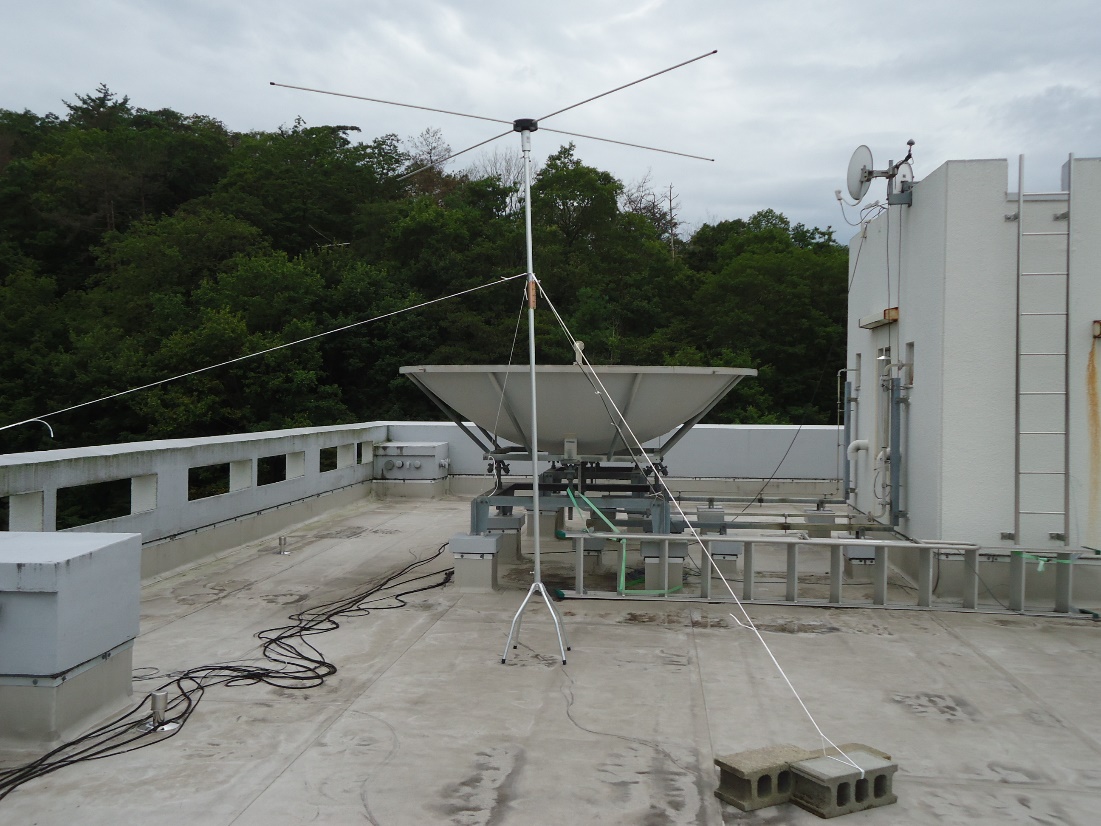
Receiving antenna attached to MU radar
Publications, etc.
Hiroyuki Hashiguchi, Takahiro Manjo, Mamoru Yamamoto, Koji Nishimura, Toru Sato, and Taishi Hashimoto, Development of MU radar real-time processing system with adaptive clutter rejection, International Symposium on the Whole Atmosphere, Tokyo, September 14-16, 2016.
Research 8: Biological response of tropical invasive ants in temperate regions (Chin-Cheng Yang)
This project aims to empirically quantify how tropical invasive ants respond to low temperature as an extreme survival stressor. The outcome of this research can facilitate our understanding of the mechanisms underlying cold adaptation of invasive ants.
- A standard chill-coma recovery test is conducted where two invasive ants (longhorn crazy ant and yellow crazy ant) are challenged with various low temperatures (0~10C) for at least 15 hours, and their recovery patterns (recovery rate and mortality at the end of the experiment) are carefully monitored (Figure).
- A workshop entitled “Mini-symposium on Invasive Ant Research” was held on 22 Feb, 2017, at the School of Biological Sciences, Universiti Sains Malaysia (USM), Penang, Malaysia, co-organized by Prof. Chow-Yang Lee (from USM) and Dr. Chin-Cheng Yang (RISH). Dr. Yang presented a talk entitled, “Ecology, impact, and management of invasive ants in temperate regions”, which covered the results of this project.
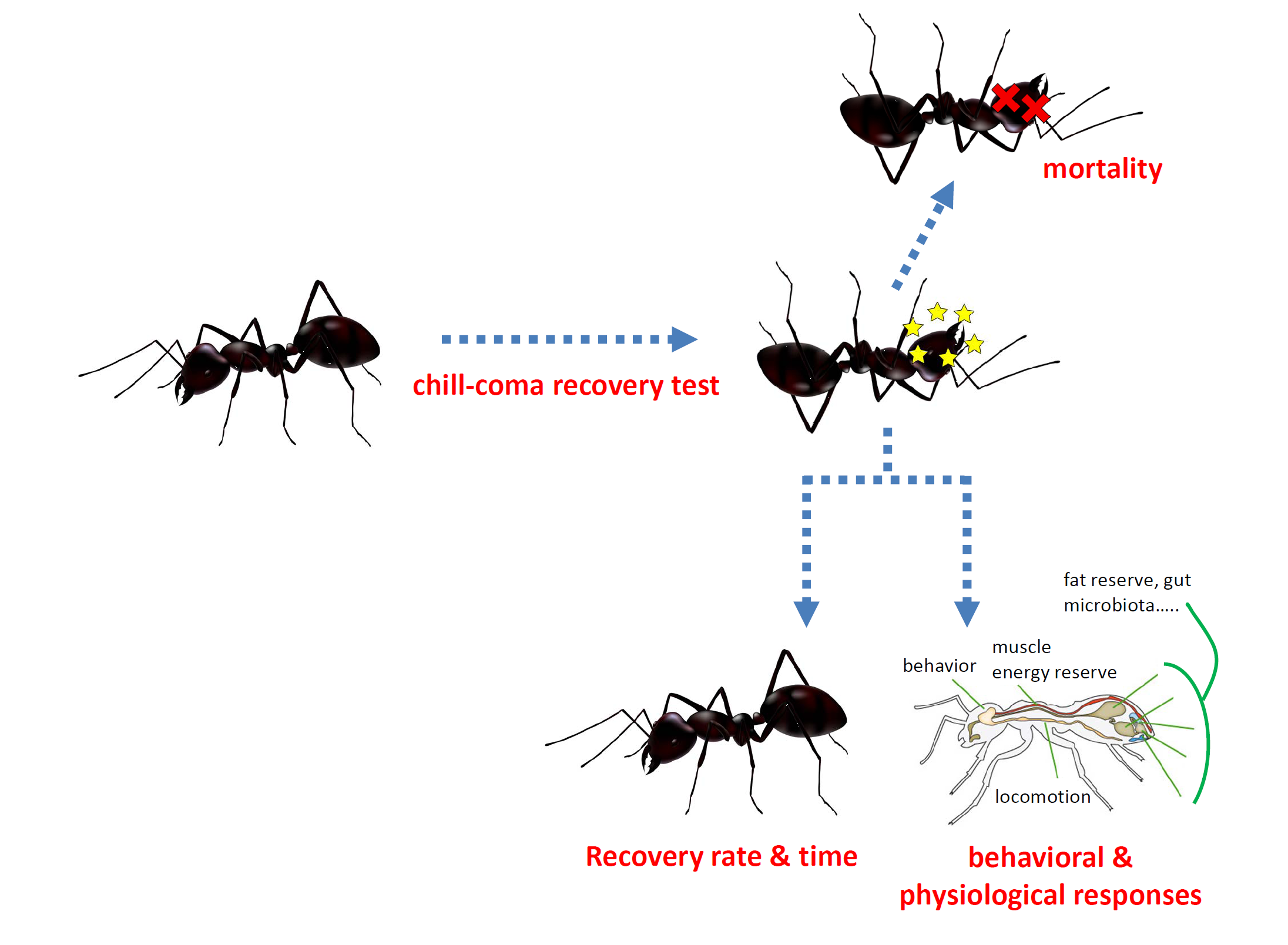
Figure. Research flow of the current project
Research 9: Observations of atmospheric minor constituents using lidar techniques(Masanori Yabuki)
We develop atmospheric lidar to precisely observe atmospheric constituents such as aerosol particles and water vapor, which are key parameters for understanding the mechanisms underlying environmental changes and localized extreme weather events.
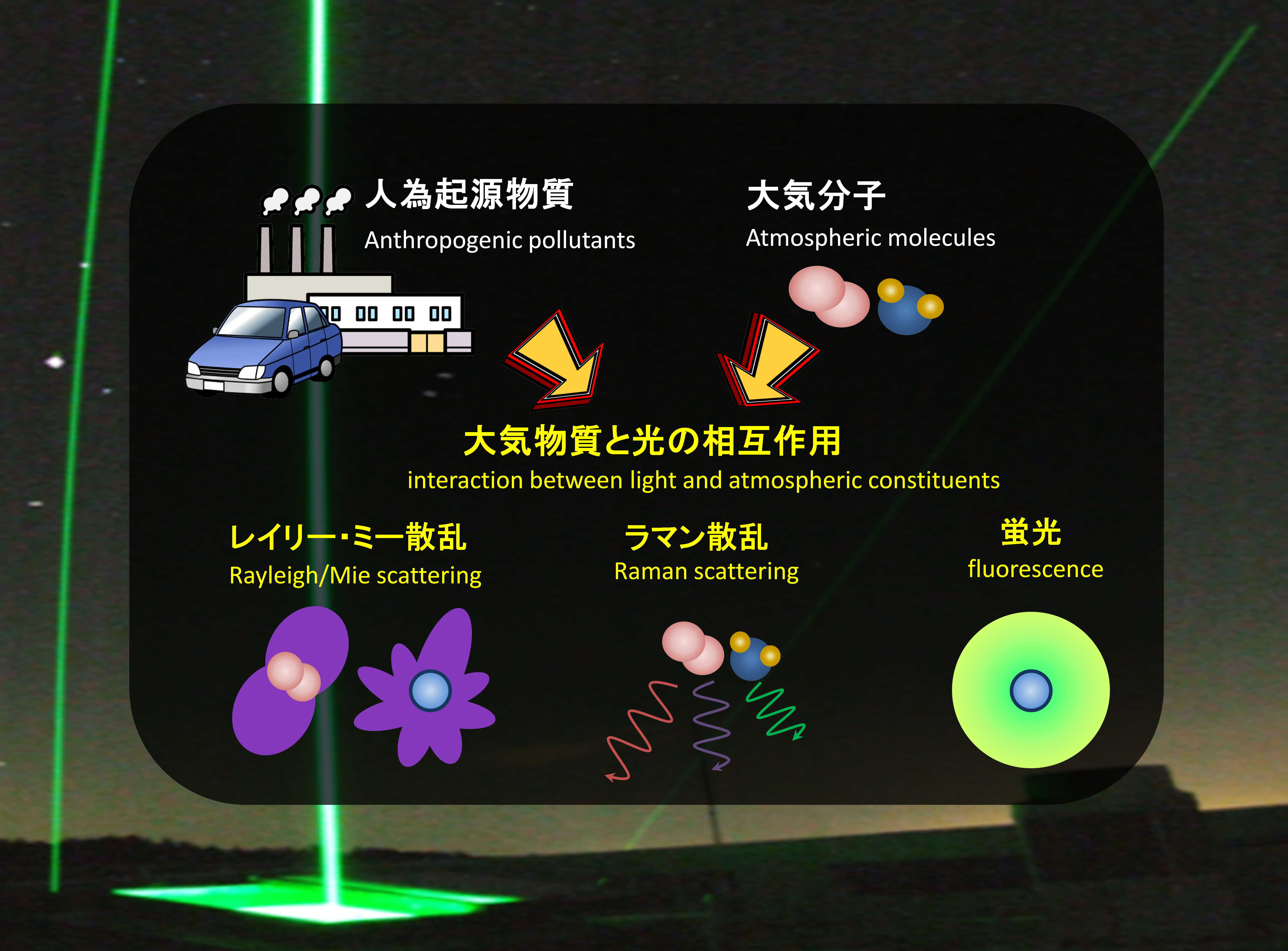
Publications, etc.
M. Yabuki, M. Matsuda, T. Nakamura, T. Hayashi and T. Tsuda, A scanning Raman lidar for observing the spatio-temporal distribution of water vapor, J. Atmos. and Solar–Terres. Phys., 150, 21–30, 2016.


